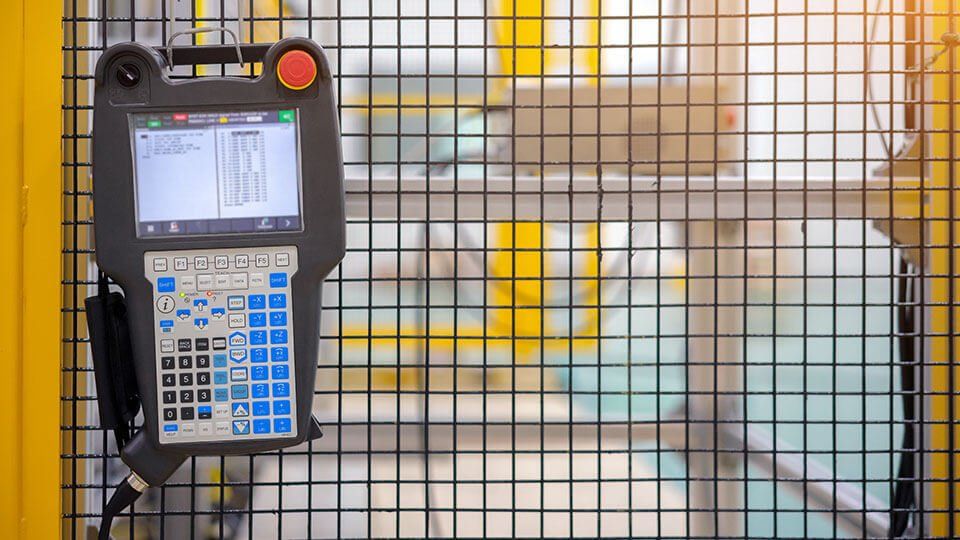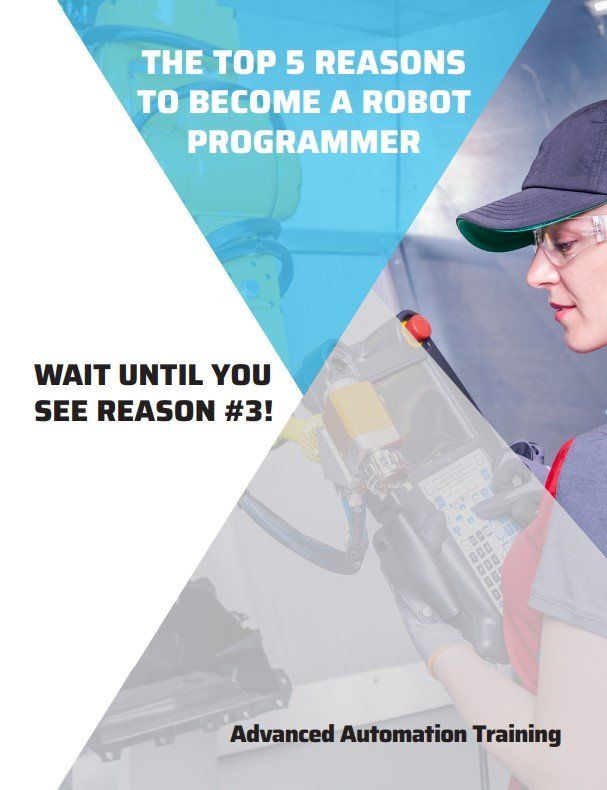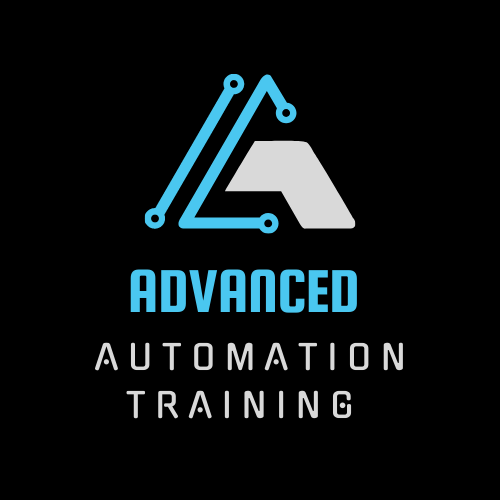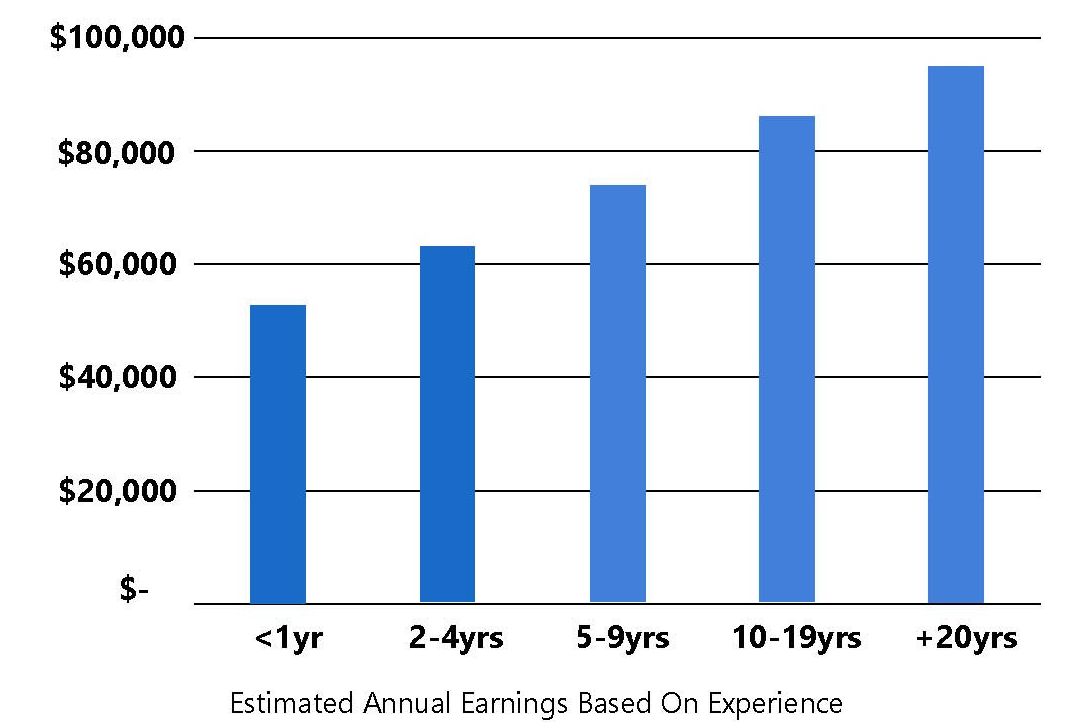Robot Programming Training Courses
Learn how to become a robot programmer!
Last Updated: February 17, 2023
Find Robot Programmer Training Classes!
Find great robot programmer training courses to enhance your career in automation. We have some tremendous hands-on robotics training programs listed in the United States. Robot programmer training classes generally last anywhere from one to five days, while other courses may last several weeks or months.

The need for robot programmers is on the rise, with industrial automation growing yearly and the labor force in the industry decreasing. It is a great profession that can be rewarding and beneficial for both company and the worker. Whether you are a recent high school graduate or looking for a new career in automation, the time is right to consider becoming a robot programmer.
Lots of companies are also giving robot training to their employees to upskill their workforce. This upskilling allows businesses to grow their internal resources to fill the skill gaps in automation. If your business is looking for locations to train robot programmers, our list of training facilities will be beneficial.
You can now find these classes all located in one spot. This article aims to help you find the best robot programmer training classes for your specific requirement.
Who needs robot programmer training?
- New Robot Programmers – Never used a robot before? No problem; sign up for a beginner robotics course, learn the basics of robot programming, and start your robotics career!
- Current Professionals – If you are in the industry and have never taken a course before, update your existing technical robot skills, so you know the ins and outs of your current robot.
- Experienced Programmers – Interested in learning how to program a new robot brand, or maybe your company is about to receive updated equipment? Learn how to use the equipment before it gets on the shop floor in an offline training cell.
- Expert Level – Continue your education, and challenge yourself to learn something new about the robot system that you did not know before.

The top 5 reasons to to become a robot programmer
Find out why you should be a part of this booming automation industry.
Basic Types Of Robot Programmer Classes:
Listed below are the types of classes that robot programming facilities will teach depending on the student's skill level.
- Beginner Robotics Course – These classes will teach basic programming functions, which include touching up points, editing or modifying programs, learning essential functions of the teach pendant, and some input or output signals. Students will also learn how to move the robot to safe positions and reset basic robot faults.
- Intermediate Robotics Course – Create programs from scratch, and program the tool center point (TCP). Learn how to program macros, set up robot zones, and adequately use input/out functions.
- Advanced Robotics Course – Advanced robotics training courses will specialize in critical areas of the robot process, either with specific tools and equipment added to the robot or on its key features.
What to look for in a robot training class?
Hands-On Robot Programmer Training Courses.
Below we will describe our top robotics courses and schools for robot programmer training and why.
SKIP TO:
Advanced Automation Training Courses

Advanced Automation Training
Approximate Course Cost: $2,500.00
Training Facility Highlights:
Student-to-Robot Ratio: 1:1
Robots Ready for Training: 4
Robot Brands: Fanuc, ABB, KUKA
Number of Classes Offered: 5
Average Class Size: 3 max.
Accredited: No
Provided Certification: Yes
Site Location: Shelby Twp., MI
Advanced Automation Training Courses
PROS
- Robot-to-student ratio
- Smaller class size
- Postgraduate support program
- Great teachers
- Multiple robot brands available for training
CONS
- Limited number of seats in each class
This facility is great for one-on-one robot learning. The smaller class sizes are structured to have the students be teacher-focused while getting lots of hands-on training. The robot-to-student ratio is 1:1, giving students lots of time to learn about each robot during class.
They offer a postgraduate support program where students can reach out to teachers after class to ask questions to the group or instructor. A learning packet is provided to each student for them to keep notes and highlight memorable lessons learned.
Robotic Welding Training Courses

Lincoln Electric Training
Approximate Course Cost: $2,990.00
Training Facility Highlights:
Student-to-Robot Ratio: 1:1 to 3:1
Robots Ready for Training: 4
Robot Brands: Fanuc
Number of Classes Offered: 5
Average Class Size: <12
Accredited: Yes
Provided Certification: Yes
Site Location: Cleveland, OH
Lincoln Electric Robotic Welding Courses
PROS
- All students receive reference materials, documents, and contact information
- Free training with the purchase of a robotic system
- Robotic service training program
- WeldPRO class is a virtual meeting
CONS
- Potential of 3:1 student-to-robot ratio
- Entry-level exam is required before registration
- Only Fanuc robot training is available
According to Lincoln Electrical, more than 20% of commercial welding in the United States is done by robots. This trend is expected to grow as companies that use welding processes face a labor shortage in the manufacturing industry.
Welding robots will produce consistent weld quality, increase productivity, allow for product flexibility, and, most notably, are safe to use. Welding robots can be highly cost-effective if the robotic welding technicians are adequately trained in welding and robotics programming.
Lincoln Electric offers great robotic welding training programs. Their power supplies are matched with Fanuc robots, where students will learn about welding and how to program the robot.
Industrial Robotics Training

Industrial Robotics Training
Approximate Course Cost: $1,936.00
Training Facility Highlights:
Student-to-Robot Ratio: -
Robots Ready for Training: -
Robot Brands: Fanuc
Number of Classes Offered: 3
Average Class Size: 12
Accredited: Yes
Provided Certification: Yes
Site Location: Houghton, MI
Industrial Robotics Training Courses At Michigan Tech
PROS
- No prerequisite is required to attend the classes
- Provided with online modules before hands-on learning
- Certified Instructor
- Course content identical to Fanuc
- Well priced
CONS
- Isolated location
Michigan Tech offers multiple certified robot programmer training courses every fall and spring. One of the only places in the upper peninsula of Michigan to get robot programmer training.
Students will be given pre-test and post-test designed to determine attendees’ understanding of the course materials and track improvement. At the course completion, it is required to receive an 80% on the post-test to obtain the robot certification.
One of the downsides of this training program is that they are located in the upper peninsula of Michigan, so it can be challenging to travel to their training facility.
OEM Robot Training Courses:
Take a robot programming course directly from the original equipment manufacturer (OEM). Check out these links to set up your training course at the robot manufacturer. The OEMs often have very detailed courses on their systems and are meant for customers who purchase their equipment directly.
FANUC Robot Programmer Training
Yaskawa Robot Programmer Training
KUKA Robot Programmer Training
Kawasaki Robot Programmer Training
Robot Programming Colleges:
Are you interested in furthering your education? These colleges and tech schools offer college-level robotics or robot programming classes.
LEARN MORE ABOUT ROBOT PROGRAMMING
Robot Programmer Salary:
The average robot programmer’s salary in the United States is around $75,000 annually. This pay range for a robot programmer would be approximately $35.00/ hour or just over $6,000/month. The average robot programmer’s salary can vary quite drastically depending on the location of the job, the programmer’s technical skill level, and prior robot experience.

Robot Programmer Jobs:
There currently are lots of open robot programmer jobs throughout the United States. Here is a list of a few job titles that require robot programming experience:
- Robot Technician
- Robot Programmer
- Robotic Engineer
- Robot Maintenance
- Robotic Process Automation Development
- Robotics Software Engineer
- Automation Engineer
- Robotics Application Engineer
- Robotics Specialist
The great thing about robot programming is many technician, or maintenance jobs do not require a degree in the field. While there are many robot jobs listed above, some of the engineering or specialist roles may require advanced degrees to apply.
Working in automation will give you stability because you will have many job opportunities as the robotic automation and robot industry continues to grow. Many sectors are available for robot programmers to find jobs.
Many people find that contracting at the start of a career is very beneficial to gain a lot of robot experience. Places like JOINER Services offer robot programming jobs on their engineering service platform, giving contract robot programmers many opportunities to see many different client facilities, to build their programming experience quickly.
Sources: NOCTI, and Zip Recruiter.
Most popular automation training categories:
Stay Informed
Subscribe to our newsletter and get the latest automation news, trends, and topics in the industry.
